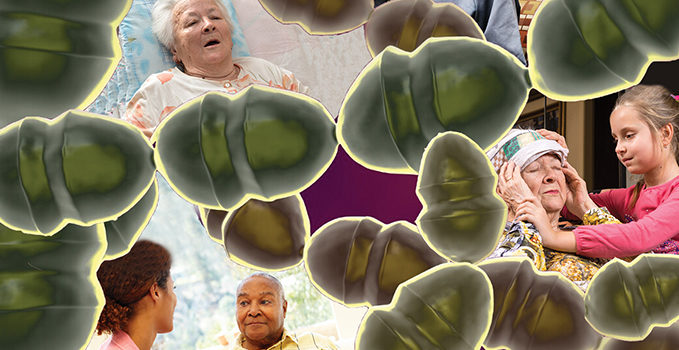Clindamycin Reduces Resistance to Group A Strep Key point: Another use for clindamycin. Citation: Andreoni F, Zurcher C, Tamutzer A, et al. Clindamycin affects group A streptococcus virulence factors and improves clinical outcome. J Infect Dis. 2017;215(2):269-277. Necrotizing fasciitis is a life-threatening infection not frequently seen in the urgent care center, though it does occur. This article from the Infectious Diseases Society of America discusses the importance of adding clindamycin to the treatment regimen. No …
Read More
Pediatric Elbow Assessment: An Urgent Care Approach
Urgent message: While pediatric elbow injuries can be a simple fix in an urgent care setting, understanding mechanism of injury and recognizing cases where referral is warranted help ensure positive outcomes. Pediatric musculoskeletal injuries comprise approximately 12% of the 10 million annual visits to urgent care centers and emergency departments in the United States. History, physical exam and proper imaging remain the mainstay of diagnosis and treatment of many orthopedic related chief complaints. The purpose …
Read More
An Uncommon Mechanism of Work-Related Partial-Thickness Triceps Tear
Urgent message: Triceps tears are an uncommon acute injury that can occur from multiple mechanisms, including direct trauma. Assessment of these injuries requires obtaining a medical history and exam and a knowledge of characteristic diagnostic imaging findings. Early diagnosis and identification in patients presenting to an urgent care center is critical to ensure that appropriate treatment is initiated in a timely fashion. Introduction Triceps tendon (TT) tear is the least common of all tendon injuries …
Read MoreGlass in Foot
Case The patient is an 8-year-old boy with pain in the right foot for the last several hours. He refuses to walk on the foot. There is no reported injury. On physical exam, you find there is a normal appearance to the foot (no erythema, swelling). However, there is pain with palpation over the plantar aspect of the mid aspect of the right foot. View the image taken (Figure 1) and consider what your diagnosis …
Read MoreClinical Practice Guidelines: Holy Grail or Holy %&$#!@?
Clinical practice guidelines have been gaining interest, along with a little ire, over the last decade. Fueled by Medicare reform, the Affordable Care Act, Meaningful Use, and value-based reimbursement models, clinical practice guideline development has been envisioned as a critical way to achieve consistent care quality in a cost-effective and evidence-based way. This is nothing new of course. I remember memorizing the U.S. Preventive Services Task Force Screening Guidelines in residency in preparation for boards. …
Read MoreLateral Humeral Condyle Fracture
Case A 14-year-old boy presents to urgent care complaining of lateral right elbow pain that began after a fall on the playground yesterday, in which he landed on his outstretched hand. He has no significant medical or surgical history. The elbow pain is worse with range of motion. He denies any wrist or shoulder pain, and there is no head trauma. There are no paresthesias to the hand or arm. View the images taken (Figures …
Read More
Urgent Care Evaluation of Pneumonia
Urgent message: The incidence of community-acquired pneumonia (CAP) is seasonal in nature, with a peak during the winter months and a trough in the summer months. In the urgent care setting, primary concerns are risk factors for CAP, as well as current treatment and testing guidelines. Overview Pneumonia is an acute alveolar lung infection that presents with infiltrates upon chest imaging and is often accompanied by fever, cough, sputum production, shortness of breath, and physical …
Read More
A Rare but Insidious Cause of Abdominal Pain
Urgent message: Recognizing the need for workup and referral in patients, even if their symptoms are relatively common, is crucial for optimal outcomes Introduction Abdominal symptoms can be attributed to a wide array of causes. When etiology is not immediately apparent, searching for signs and symptoms the patient may not have reported—or even be aware of—may be the first steps toward timely diagnosis and treatment. In this case, the abdominal symptoms were ultimately due to …
Read MoreAbstracts in Urgent Care February 2017
Earlier Return to Activities May Benefit Concussed Children Key point: Another (possibly surprising) view on rest after concussion. Citation: Grool AM, Aglipay M, Momoli F. Association between early participation in physical activity following acute concussion and persistent postconcussive symptoms in children and adolescents. JAMA. 2016;316(23):2504-2514. In this prospective, multicenter cohort study, approximately 2,400 children aged 5-18 years with acute concussion diagnosed at nine emergency departments across Canada were evaluated for persistent postconcussive symptoms (PPCS). Each …
Read More
An Urgent Care Approach to Malignancy Complications
Urgent message: The prevalence of cancer is increasing—and along with it, malignancy-associated complications. Early recognition and management of these conditions is vital to alleviating patient morbidity and maximizing quality of life. Introduction Cancer is a leading cause of morbidity and mortality throughout the world, accounting for over 580,000 deaths in 2013 in the U.S.1 With an aging population and more effective forms of treatment, the overall prevalence of cancer is increasing. Consequently, acute cancer-related complications …
Read More